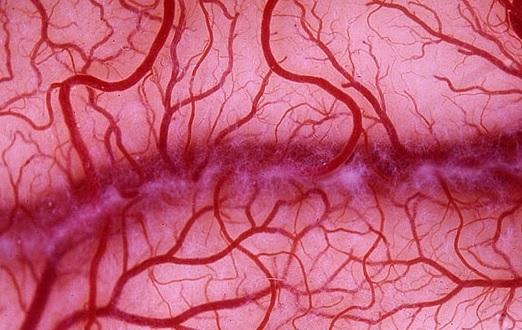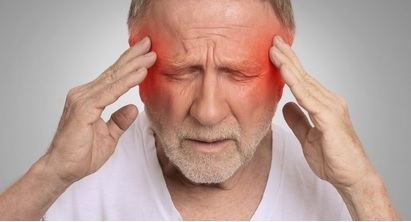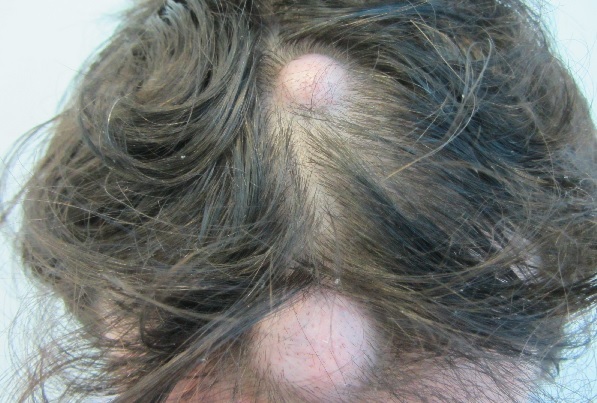Microangiopathy of the brain: causes, symptoms, consequences
Contents:
- The essence of the microangiopathy of the brain
- The causes of the formation of microangiopathies
- Manifestations of
- Diagnosis
- Treatment of
- Forecast
 Microangiopathy is more or less present in many diseases. Most often they are spoken of as a complication of diabetes mellitus, a violation of the blood supply of the lower extremities, a pathology in the brain. A microangiopathy of the brain, what is it?
Microangiopathy is more or less present in many diseases. Most often they are spoken of as a complication of diabetes mellitus, a violation of the blood supply of the lower extremities, a pathology in the brain. A microangiopathy of the brain, what is it?
This common disease is a pathological condition of small vessels of the brain, characterized by a violation of their tone and structure of the walls. The function of these tiny microcirculatory vessels is to ensure the metabolism of the brain tissue. It is from them that oxygen, glucose and other nutrients enter the brain tissue, and carbon dioxide and other products of their vital activity leave the neurons.
The essence of the microangiopathy of the brain
The formation of a microangiopathy of the brain causes loss of the vascular wall of elasticity, thickening, reduction of the vascular lumen. This leads to obstruction of small blood vessels. As a result, neurons suffer from a lack of microcirculatory blood flow, and, as a consequence, oxygen, glucose.
Violation of the microvessel structure leads to a decrease in the strength of their walls. They can burst with subsequent subarachnoid hemorrhage. Absence of blood flow leads to local death of neurons and their replacement by gliosis foci, scar tissue with connective tissue.
Causes of formation of microangiopathies
Disturbances in the structure of the vessel wall may be as follows:
- Thrombosis .Obstruction of the lumen by a thrombus. The microcirculation vessels are very small in diameter. For some of them, blood cells pass only in one row, changing their shape. Any pathology in the body, leading to the formation of blood clots, gluing together erythrocytes( sludge), leads to the fact that such small arterioles and capillaries are clogged.
- Necrosis .Death of vascular cells in case of blood supply or exposure to toxic substances.
- Hyalinosis - deposits on the walls of the vessels of the protein - hyaline. It occurs as a result of a metabolic disorder in the connective tissue. Gradually, the internal walls of the vessels are broken and broken up and soaked in fibrin and other supplies of blood plasma. Such changes are typical for hypertension, atherosclerosis, diabetes mellitus, autoimmune pathologies.
- Fibrosis .Replacement of the structure with fibrous tissue. Possible with inflammatory phenomena.
Predispose to cerebral microangiopathy of the brain such factors:
- genetically caused abnormalities of the structure of the vascular wall;
- smoking, alcohol;
- pathology in the blood coagulation system;
- injury;
- infections affecting the vessels;
- endocrine diseases, in particular diabetes mellitus;
- hypertension and other diseases of the heart and blood vessels;
- effects on the body of toxic substances;
- old age.
Manifestations of
 The initial stage of the formation of angiopathy has no manifestations, therefore it remains unnoticed. Quite small unit sites with altered blood vessels are transferred to the blood supply from collateral( adjacent, nearby) vessels. Therefore, the obvious signs of microangiopathy of the brain are absent at first.
The initial stage of the formation of angiopathy has no manifestations, therefore it remains unnoticed. Quite small unit sites with altered blood vessels are transferred to the blood supply from collateral( adjacent, nearby) vessels. Therefore, the obvious signs of microangiopathy of the brain are absent at first.
Later, when a certain volume of the microcirculatory bed is affected, the collateral blood supply can not replace the vessels that have escaped from the bloodstream, a significant number of neurons die, symptomatic:
- Pain. It is of considerable intensity, agonizing. Poorly susceptible to medication.
- Vestibular disorders. There is dizziness, confusion. Coordination of movements may suffer.
- Astheno-neurotic syndrome. In such patients, the emotional background is reduced. They are more irritable, nervous. There are often depressive conditions. The dream is broken.
- Night can be insomnia, and in the afternoon, on the contrary, comes drowsiness. There is a feeling of constant fatigue.
- Focal manifestations of microangiopathy of the brain manifest different symptoms depending on the location of pathology. Possible disturbances of pain and temperature sensitivity.
- Encephalopathy. Its expression is different.
Thus, the manifestations of the syndrome of microangiopathy of the brain are not specific. Similarly, many other brain diseases can manifest themselves.
Diagnosis
Given the absence of a marked symptomatology characteristic only for vascular microangiopathy of the brain, the use of hardware, laboratory diagnostic methods is of great importance. The detailed history of the disease is also very important. Other methods include:
- Clinical and biochemical blood tests.
- EEG( encephalography).
- Angiography with the introduction of contrast agent.
- CT, MRI.These methods are the most informative. They allow to determine the areas of gliosis, their size, prevalence, areas of ischemia, hemorrhages, allow to differentiate this diagnosis with oncology, ischemic, hemorrhagic strokes.
- Consultation of the ophthalmologist with examination of the fundus.
Treatment
As a rule, conservative. It is aimed at the therapy of primary pathology, which led to the formation of angiopathy. This is compensation for diabetes, optimal antihypertensive therapy for hypertension, normalization of blood cholesterol level.
A group of nootropics is used to improve the metabolism of neurons, vitamin therapy. Recommended moderate exercise, exercise therapy. Eliminate the foci of gliosis will not succeed, but it turns out to improve their patency, stop the progression of the disease.
Forecast
The prognosis depends on the age of the patient, the extent of the lesions by angiopathy, the concomitant pathologies, the timeliness of the treatment started. Degenerative microangiopathy of the brain varies from mild changes that subside after the treatment, to severe cerebral insufficiency with a fatal outcome.
write the question in the form below:



